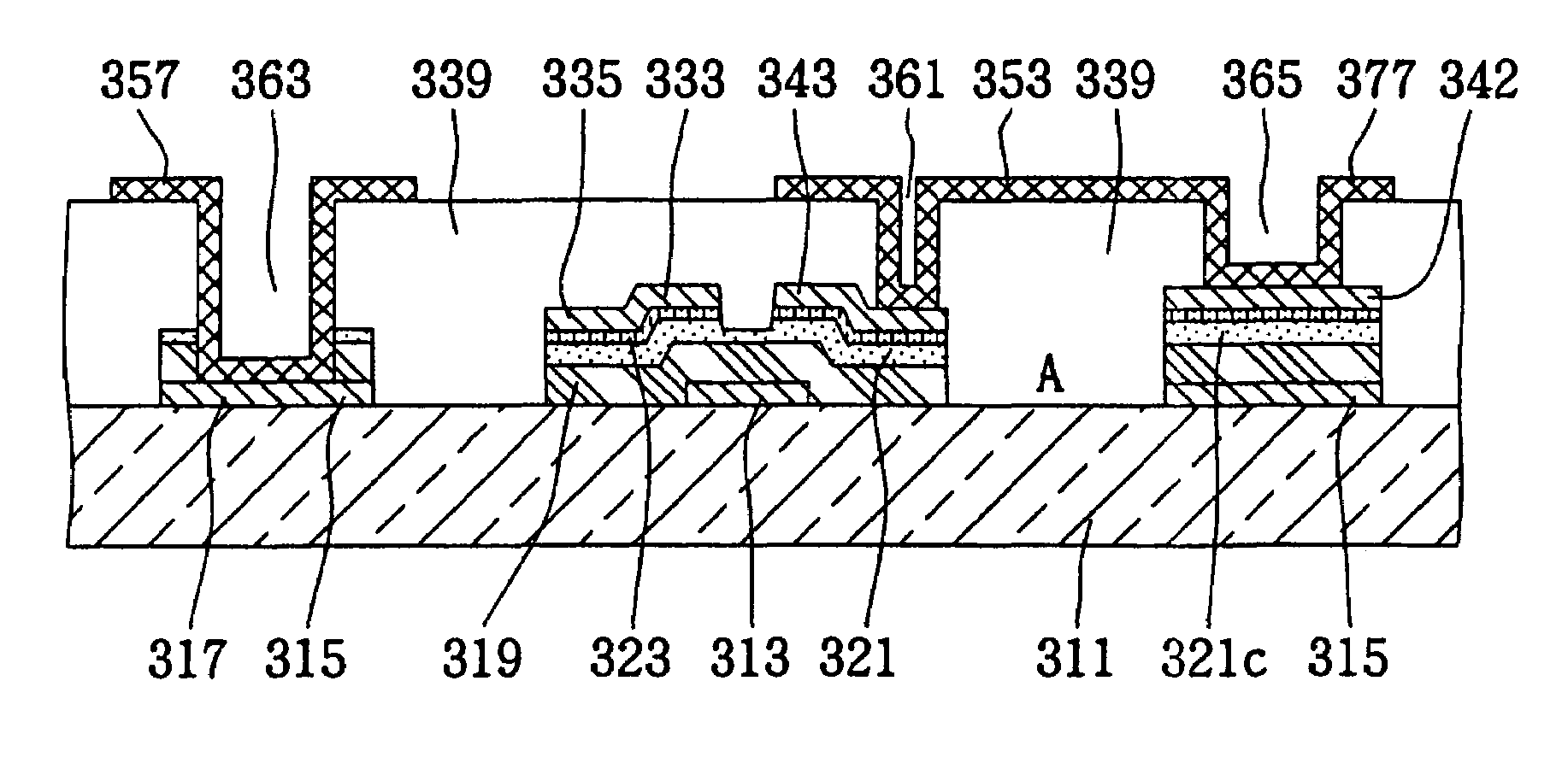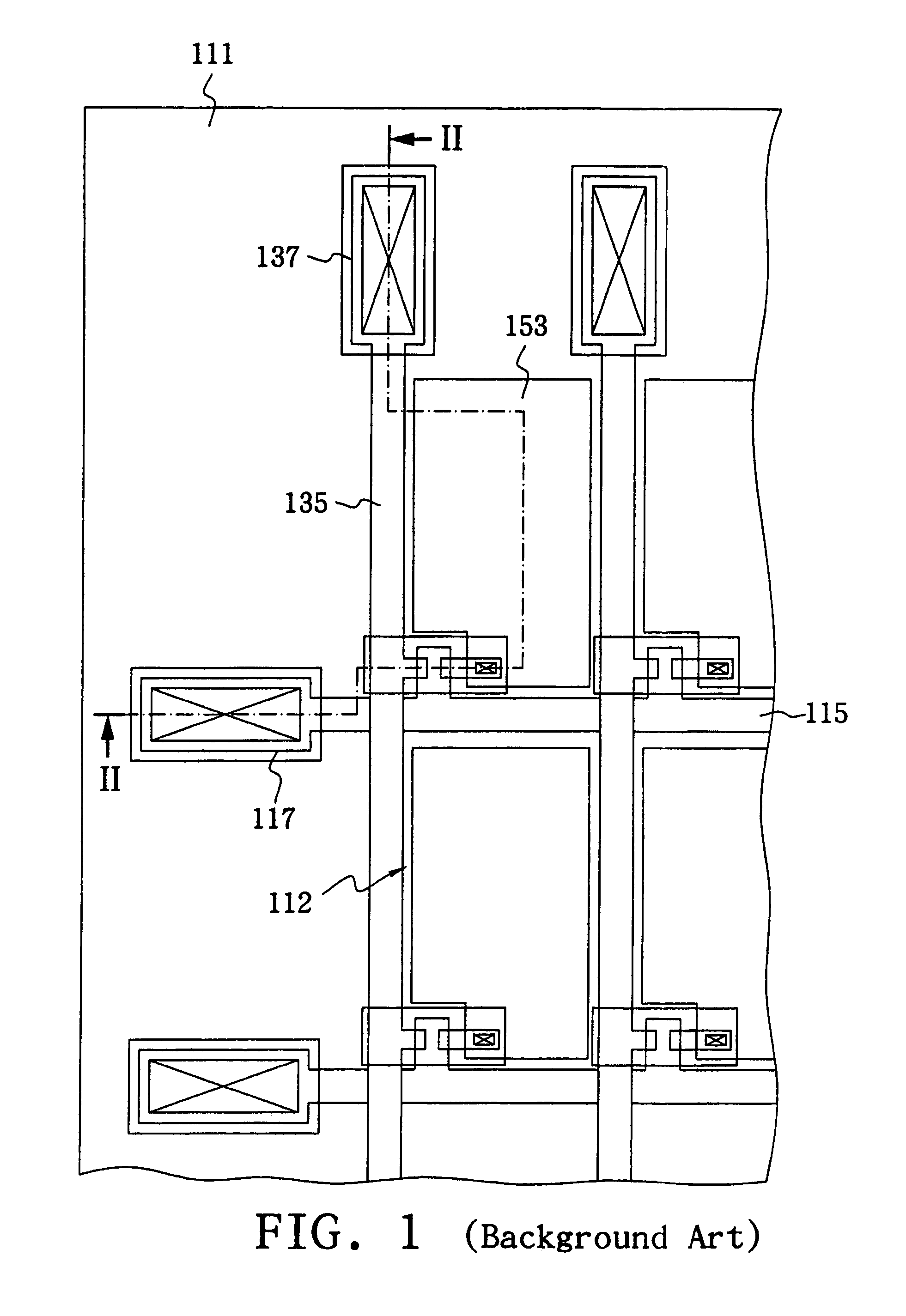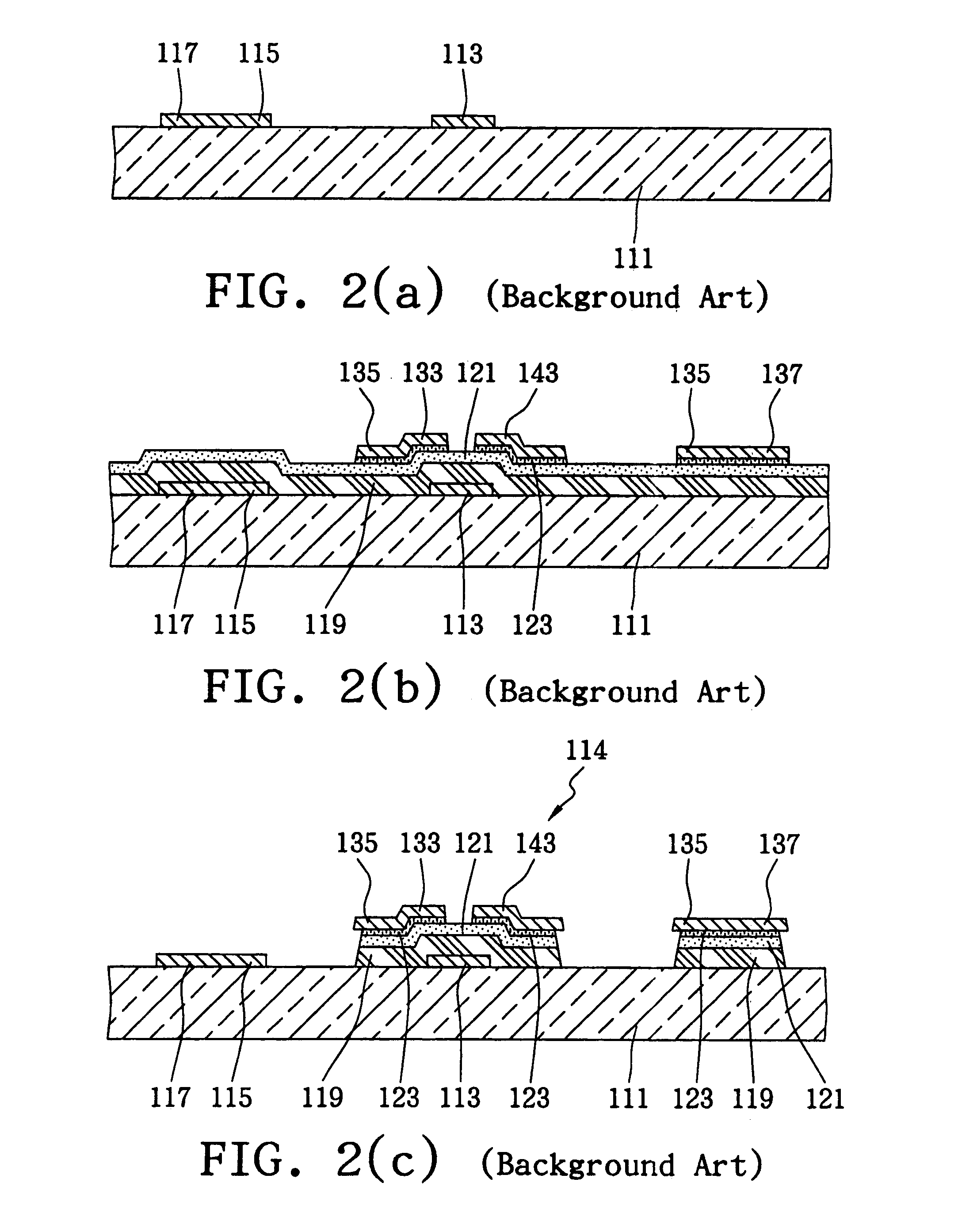Method of manufacturing liquid crystal display
a technology of liquid crystal display and liquid crystal display, which is applied in the direction of electrical equipment, semiconductor devices, instruments, etc., to achieve the effects of enhancing the brightness of images displayed on the screen, enhancing the aperture ratio, and increasing the light transmittance of liquid crystal display
- Summary
- Abstract
- Description
- Claims
- Application Information
AI Technical Summary
Benefits of technology
Problems solved by technology
Method used
Image
Examples
Embodiment Construction
[0026]FIG. 3 is a schematic diagram of the partial circuit of an active substrate in accordance with the present invention. On a substrate 311 are a plurality of pixels 312 disposed at the intersections of the scanning lines 315 and the data lines 335. A gate pad 317 and a data pad 337 are formed at one end of each scanning line 315 and each data line 335 respectively. Various driving devices are connected to the gate pads 317 and the data pads 337. Inside each pixel 312 is a thin film transistor 314 which controls. Signal voltages of the data lines 335 may be written into the pixel electrodes 353 through the scanning lines 315. To prevent the voltages written into the pixel electrodes 353 from attenuating excessively with time, a storage capacitor 316 is formed either between a scanning line 315 and a pixel electrode 353 or between a scanning line 315 and a common electrode.
[0027]FIGS. 4(a)–4(e) are cross-sectional diagrams taken along the line III—III, regarding the steps of the m...
PUM
| Property | Measurement | Unit |
|---|---|---|
| conductive | aaaaa | aaaaa |
| thicknesses | aaaaa | aaaaa |
| thickness | aaaaa | aaaaa |
Abstract
Description
Claims
Application Information
 Login to View More
Login to View More - R&D
- Intellectual Property
- Life Sciences
- Materials
- Tech Scout
- Unparalleled Data Quality
- Higher Quality Content
- 60% Fewer Hallucinations
Browse by: Latest US Patents, China's latest patents, Technical Efficacy Thesaurus, Application Domain, Technology Topic, Popular Technical Reports.
© 2025 PatSnap. All rights reserved.Legal|Privacy policy|Modern Slavery Act Transparency Statement|Sitemap|About US| Contact US: help@patsnap.com



